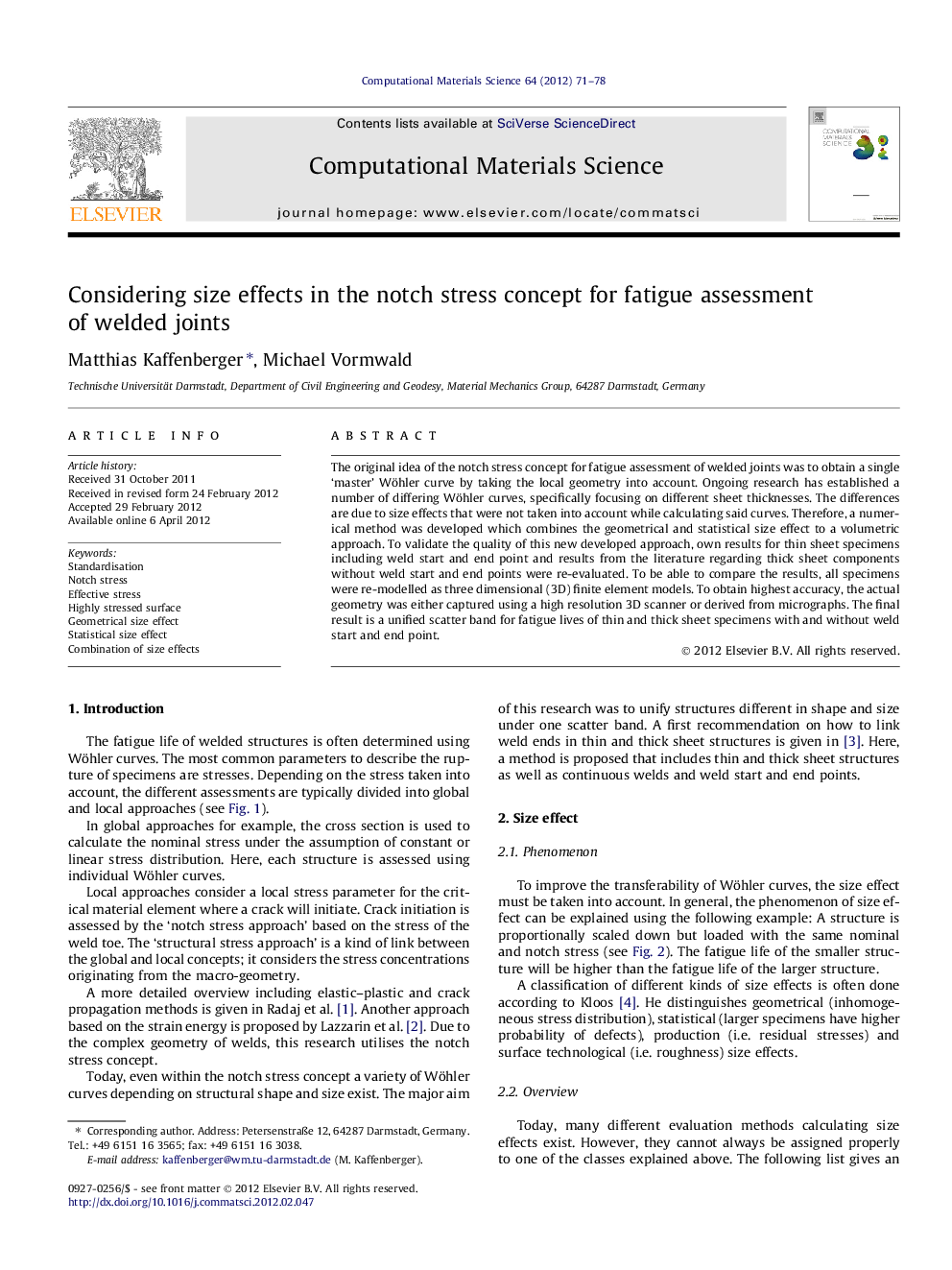| Article ID | Journal | Published Year | Pages | File Type |
|---|---|---|---|---|
| 1561686 | Computational Materials Science | 2012 | 8 Pages |
The original idea of the notch stress concept for fatigue assessment of welded joints was to obtain a single ‘master’ Wöhler curve by taking the local geometry into account. Ongoing research has established a number of differing Wöhler curves, specifically focusing on different sheet thicknesses. The differences are due to size effects that were not taken into account while calculating said curves. Therefore, a numerical method was developed which combines the geometrical and statistical size effect to a volumetric approach. To validate the quality of this new developed approach, own results for thin sheet specimens including weld start and end point and results from the literature regarding thick sheet components without weld start and end points were re-evaluated. To be able to compare the results, all specimens were re-modelled as three dimensional (3D) finite element models. To obtain highest accuracy, the actual geometry was either captured using a high resolution 3D scanner or derived from micrographs. The final result is a unified scatter band for fatigue lives of thin and thick sheet specimens with and without weld start and end point.
► Combination of geometrical and statistical size effect. ► Numerical Method regarding size effects for standardisation of Wöhler curves. ► Standardisation of thin and thick sheet specimens with and without weld start and end points. ► Actual geometry was taken into account.
